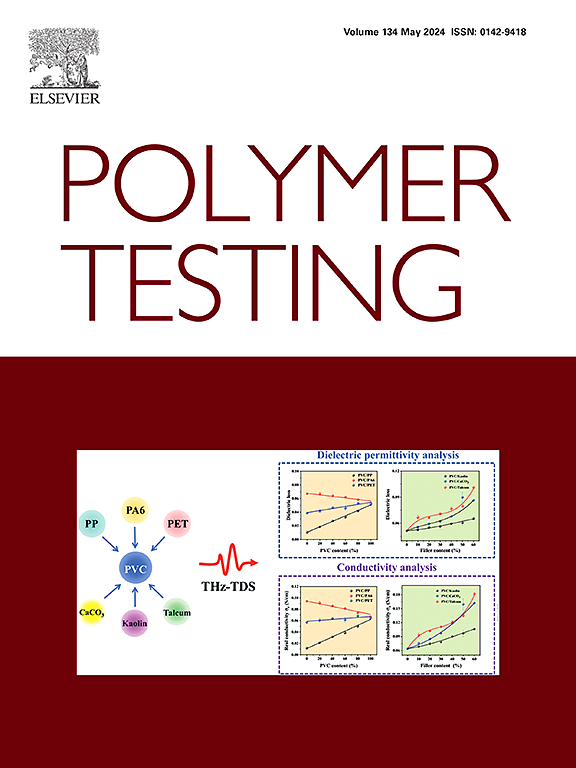Complete relaxation of thiol-ene vitrimeric elastomers with drastically reduced dynamic content
IF 5
2区 材料科学
Q1 MATERIALS SCIENCE, CHARACTERIZATION & TESTING
引用次数: 0
Abstract
Establishing a balance between polymer flow for reprocessing and mechanical robustness at service temperatures presents a challenge in designing covalent adaptable networks (CANs). In this study, we present a series of thiol-ene vitrimeric materials whose dynamicity is based on disulfide and beta-hydroxyester bonds. Firstly, through a facile epoxy-acid reaction, either a disulfide-containing or disulfide-free allyl precursor was synthesized. Subsequently, the two allyls were mixed in varying proportions and cured by a trithiol crosslinker. A dithiol chain extender was also added into the formulation at varying proportions in order to modify the network architecture and thus regulate dynamicity. The resulting viscoelastic and vitrimeric behavior as influenced by the choice of monomer type and proportion was studied in depth. Results show that disulfide content of as low as 17 % is sufficient to impart full recyclability to these versatile materials. Our tests also revealed that the most significant factor for creep suppression is not the disulfide content but the network connectivity dictated by the average thiol functionality. The cured materials are easily recyclable by heating under pressure, yielding comparable mechanical and thermomechanical properties across several cycles.
巯基玻璃弹性体的完全松弛,动态含量急剧降低
在共价自适应网络(can)的设计中,如何在聚合物再处理流动和使用温度下的机械稳健性之间建立平衡是一个挑战。在这项研究中,我们提出了一系列基于二硫键和-羟基酯键的硫烯玻璃聚合材料。首先,通过易化环氧酸反应,合成了含二硫或不含二硫的烯丙基前驱体。随后,将两种烯丙基以不同比例混合,并用三硫醇交联剂固化。在配方中加入不同比例的二硫醇扩链剂,以改变网络结构,从而调节动力学。深入研究了单体类型和配比对树脂粘弹性和玻璃聚合性能的影响。结果表明,低至17%的二硫化物含量足以赋予这些多功能材料的完全可回收性。我们的测试还表明,抑制蠕变的最重要因素不是二硫化物含量,而是由平均硫醇功能决定的网络连通性。固化的材料很容易通过在压力下加热回收,在几个循环中产生相当的机械和热机械性能。
本文章由计算机程序翻译,如有差异,请以英文原文为准。
求助全文
约1分钟内获得全文
求助全文
来源期刊

Polymer Testing
工程技术-材料科学:表征与测试
CiteScore
10.70
自引率
5.90%
发文量
328
审稿时长
44 days
期刊介绍:
Polymer Testing focuses on the testing, analysis and characterization of polymer materials, including both synthetic and natural or biobased polymers. Novel testing methods and the testing of novel polymeric materials in bulk, solution and dispersion is covered. In addition, we welcome the submission of the testing of polymeric materials for a wide range of applications and industrial products as well as nanoscale characterization.
The scope includes but is not limited to the following main topics:
Novel testing methods and Chemical analysis
• mechanical, thermal, electrical, chemical, imaging, spectroscopy, scattering and rheology
Physical properties and behaviour of novel polymer systems
• nanoscale properties, morphology, transport properties
Degradation and recycling of polymeric materials when combined with novel testing or characterization methods
• degradation, biodegradation, ageing and fire retardancy
Modelling and Simulation work will be only considered when it is linked to new or previously published experimental results.
 求助内容:
求助内容: 应助结果提醒方式:
应助结果提醒方式:


